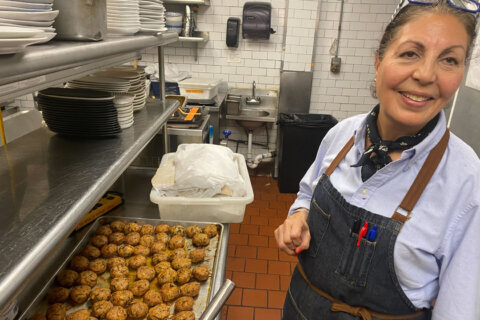Gas prices are $1.38 a gallon higher than last year, but that’s unlikely to deter pent-up desire to drive on Thanksgiving trips, according to AAA Mid-Atlantic.
Currently, the average price for a gallon of gasoline is $3.61 — 20 cents more than last month, according to a news release.
Historically, high gas prices alone don’t change a traveler’s plan to drive for Thanksgiving.
“It would stand to reason that those who missed the annual gathering last year may be even more motivated than usual to make the trip, despite the additional expense of filling up,” said Ragina Ali, public and government affairs manager for AAA Mid-Atlantic.
She said travelers typically make other budget arrangements, such as eating out less, or spending less on hotels.
Nationally, the price at the pump continues its slow climb, rising two cents this week, to an average of $3.42. The national average is 16 cents more than last month.
Holiday travelers may want to wait until they are on the road before filling up.
The D.C. area is one of the top 10 most expensive markets in the country for gas, according to AAA.
As for how many people will be traveling, AAA projects more than 53.4 million, which the group said is the highest single-year increase since 2005, and an increase of 13% compared to 2020.
And 90% of that 53.4 million will be on the road.
“This Thanksgiving, travel will look a lot different than last year,” Ali said. “Now that the borders are open and new health and safety guidelines are in place, travel is once again high on the list for Americans who are ready to reunite with their loved ones for the holiday.”
In a news release, AAA said travelers in major metro areas could see more than double the delays they usually experience.
“Thanksgiving is one of the busiest holidays for road trips and this year will be no different even during the pandemic,” INRIX Transportation Analyst Bob Pishue said. “Drivers around major metros must be prepared for significant delays, especially Wednesday afternoon. Knowing when and where congestion will build can help drivers avoid the stress of sitting in traffic.”
Below are the worst times to travel by metro area.
| Worst Corridors and Times to Travel | |||
| Metro Area | Corridor | Peak Congestion | % Over Normal |
| Atlanta | I-85 S, Clairmont Rd to MLK Dr | Wednesday, 1:30 – 3:30PM | 340% |
| Boston | I-93 N, Quincy Market to MA-28 | Wednesday, 1:00 – 3:00PM | 240% |
| Chicago | I-290 W, Morgan St to Wolfe Rd | Wednesday, 2:45 – 4:45PM | 329% |
| Detroit | I-96 W, 6 Mile Rd to Walled Lake | Wednesday, 2:00 – 4:00PM | 211% |
| Houston | I-10 W, Sjolander Rd to TX-330 | Wednesday, 3:15 – 5:15PM | 344% |
| Los Angeles | I-5 S, Colorado St to Florence Ave | Wednesday, 3:45 – 5:45PM | 385% |
| New York | I-495 E, Borden Ave to Little Neck Pkwy | Wednesday, 2:30 – 4:30PM | 482% |
| San Francisco | I-80 E, I-580 to San Pablo Dam Rd | Wednesday, 4:00 – 6:00PM | 278% |
| Seattle | I-5 S, WA-18 to WA-7 | Wednesday, 4:00 – 6:00PM | 257% |
| Washington DC | I-95 S, I-395 to VA-123 | Wednesday, 2:00 – 4:00PM | 230% |
| Source: INRIX | |||
WTOP’s Will Vitka contributed to this report.








